As you may know, years ago on the very first sailing trip aboard OLIVIA, my then freshly bought first boat, my son had a bad step and fell overboard. Lucky him and us, he still had his life jacket on I was able to get him back to the dry very quickly. Nevertheless, this incident showed me how important safety measures, good safety equipment – especially life jackets – and at least a minimum of basic First Aid Response-knowledge is for a skipper.

After this incident I visited Germany´s leading manufacturer of life jackets, Secumar, which was very, very exciting and gave me a load of insights into how these essential pieces of equipment are made. I also talked to Dr. Hillebrandt, a keen sailor and Chief Medical Surgeon of Itzehoe´s Children´s Hospital on First Response for drowned kids. Now, let´s take another step …
Most probable injuries whilst sailing
Some weeks ago I had a bad, bad cut during a cooking-session at home, taking off a chunk of my thumb. That cut was, of course, resulting in a quite reasonable, open wound, strong bleeding and a lot of pain. Joy for days to come… Lucky me that I used to know a pharmacist who offered help in taking care of the wound. As she was by chance a keen sailor too, we began to talk about First Aid aboard sailboats and how a well-prepared First Aid Kit might look like.

What an interesting and important topic this is! Knowing that my thumb-cutting action easily could have been taken place aboard my boat too, I knew I´d had to buy a First Aid kit and asked her for help. At first we categorized the kind of injuries or sicknesses most probable to occur on sailboats. Looking back to my sailing trips I might say that this is cutting and bruising, both blunt and sharp traumas. Often resulting in bleeding wounds, mostly smaller sized. This is, for example, injuring fingers on the anti-skid Diamond-shape of the Gelcoat when winching or crushing one or two fingers between sheets and the winch. Often very painful, seldom heavy but always annoying and hindering from going on to taking on the tasks of a watch. Also stumbling over sheets, lines or down the entryway resulting in bruises and traumas of the knees, the shinbone or the head is in the top-list.
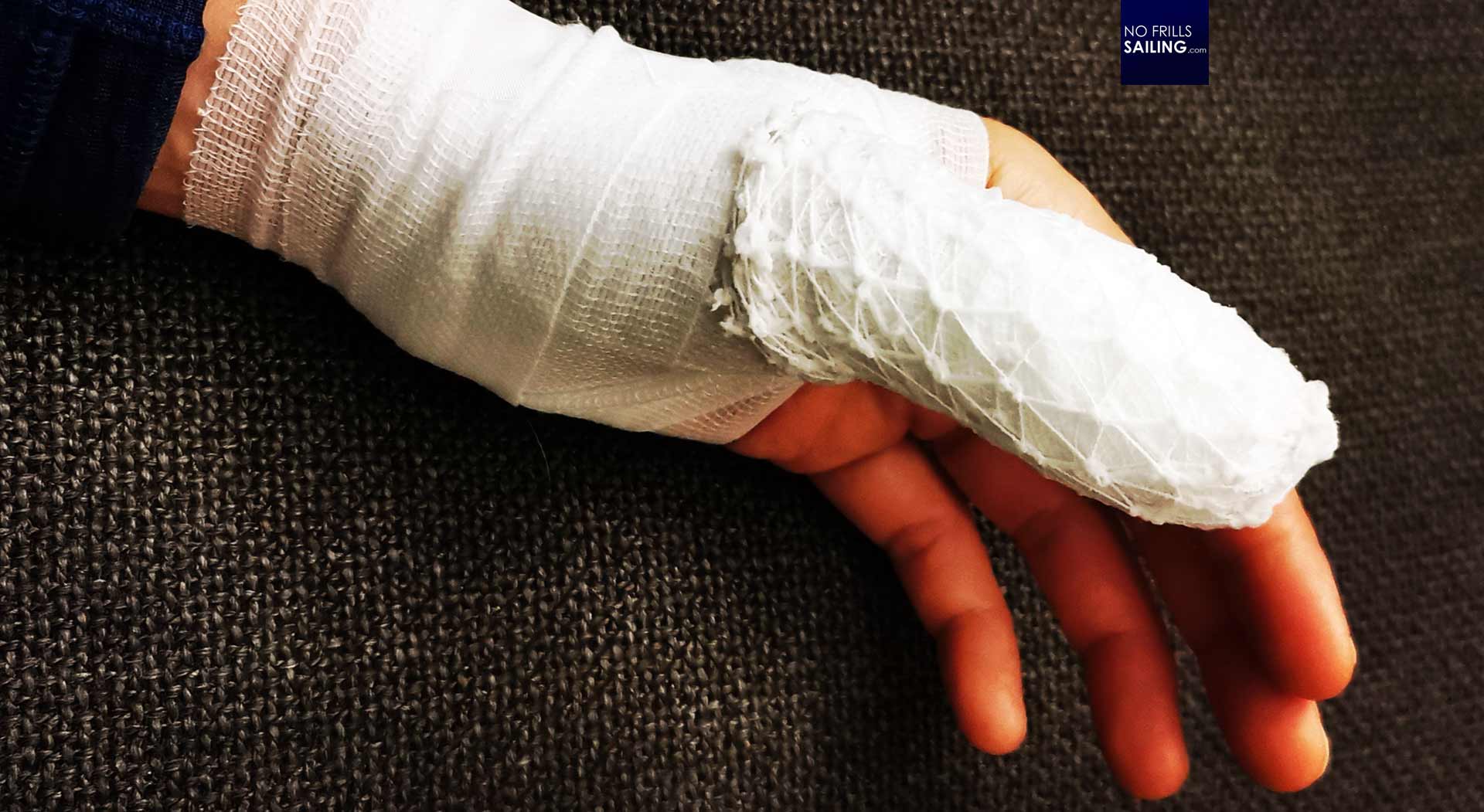
Second most probable injuries come from onboard life, reminding me of my cooking accident, which is getting burned by boiling water, especially when underway – as this has happened to a sailing mate during a trip to Denmark when he was boiling and badly burning his whole right fore-arm. Seasickness is another point. Now these are the most common and numerous injuries one can expect and – of course – one should be prepared to deal with. Getting sick underway is another thing: One can catch a cold or receive bad bacteria which infect the colum, resulting in Diarrhea and stomach aches. After categorizing and making a list of the most probable injuries, I decided to go forward an prepare myself.
The personal First Aid Kit for Sailors
On the internet there are special vendors for First Aid Kits – pre-filled with all the items you´d need in a basic constellation. You may check the ISO-norm under which the kit is filled. In Germany we have the DIN (Deutsche Industry Norm) which is a bit stricter than international ISO. Nevertheless, outside Germany you´ll most certainly find categories, like “First responder Kit” or “First response Firefighter Kit” or alike. Check size and pre-filling if fitting to your needs, you may find a load of offers on amazon but also maybe in your local pharmacy store.
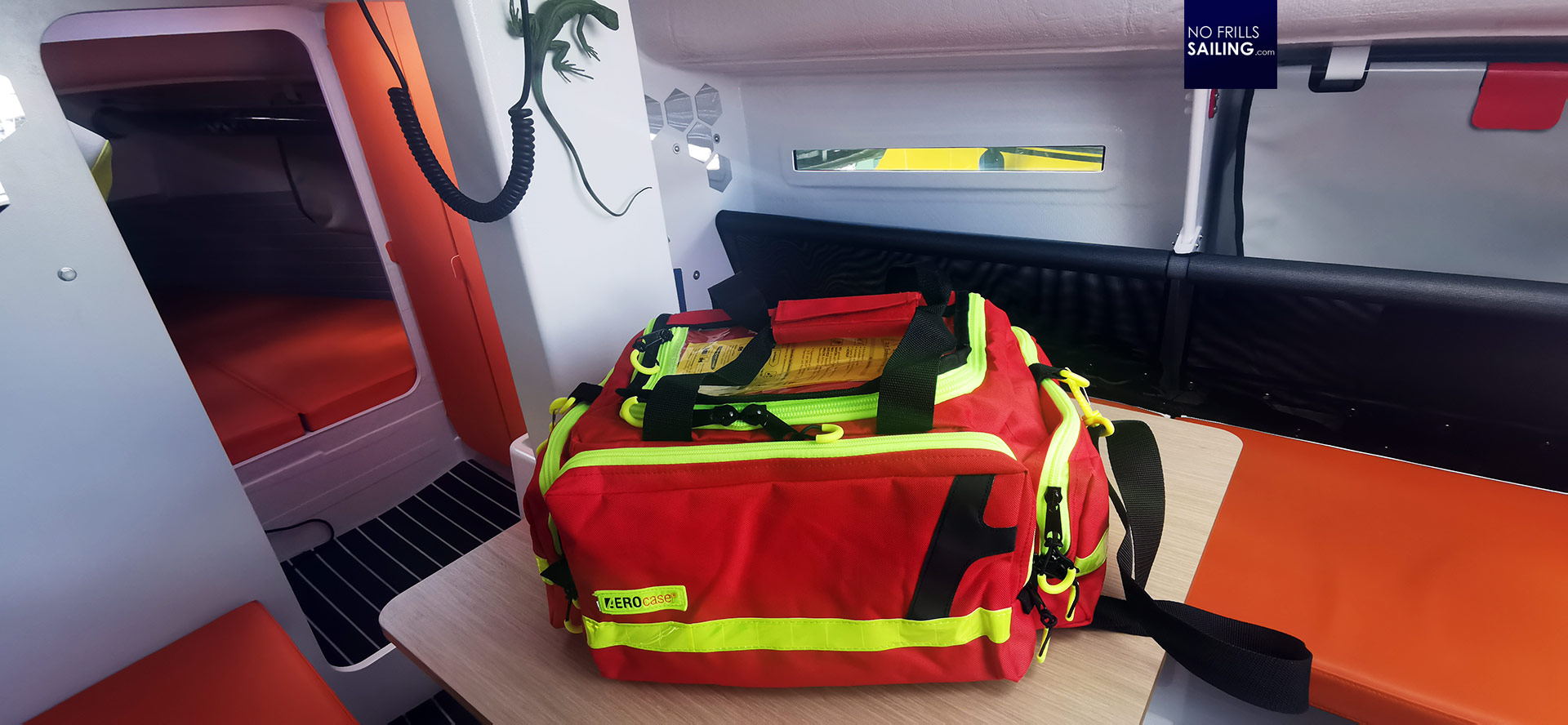
I went for a DIN 14142 Kit which is labelled “First Responder Firefighter Kit” and contains of 142 pieces. That is the basic filling with material needed to treat exactly the kind of injuries we already had identified as most probable occurring on a sailboat. The kit first of all comes packed in a well-sized flaring red colored bag. The bag itself is the center piece of the First Aid-concept of my boat: When briefing guests or my crew, I will have everything at hand in one grip and I can tell them that if something happens – here´s the place to find the cure.
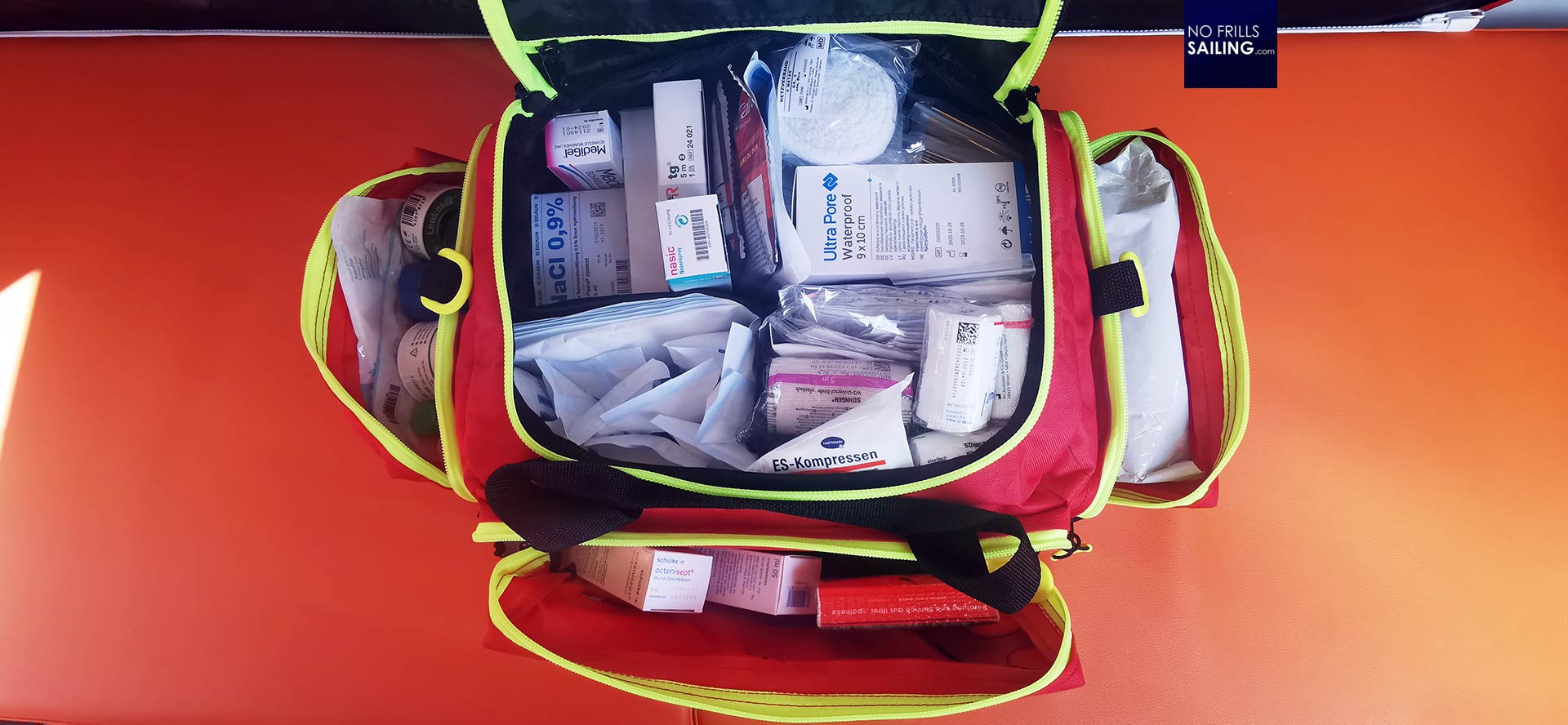
The pre-filling of the kit is more than rich: We´ve got all sorts of band-aid in different sizes, compresses, wound dressin and other material to stop a wound from bleeding, arresting bleeding. We´ve also got scissors, tweezers and medical gloves. Also a mask for mouth-to-mouth ventilation and multiple other pieces. Now, that is a good start but far from being a complete set. Luckily, the bag leaves more than enough space for individual surplus equipment which is to be packed by the skipper personally. So I went to a local pharmacy store and shopped a wish list.
Individual pharmacy and first aid material to have aboard
First of all, a learning from current Covid 19-crises, I bought different kinds of disinfection and cleansing agents: A strong anti-bacterial and anti-viral disinfectant, same for wet wipers. Face masks are a must, same as some less strong hand disinfection. My pharmacy friend told me that when treating others one must always wear gloves: “Protect yourself, that is first priority!”, she said. So I bought some more as well. I also went for NaCl-solution which I learned is a very god way to help cleaning open wounds, also, Octenisept in raw capacities which are perfect for low-grade disinfection of fresh wounds.
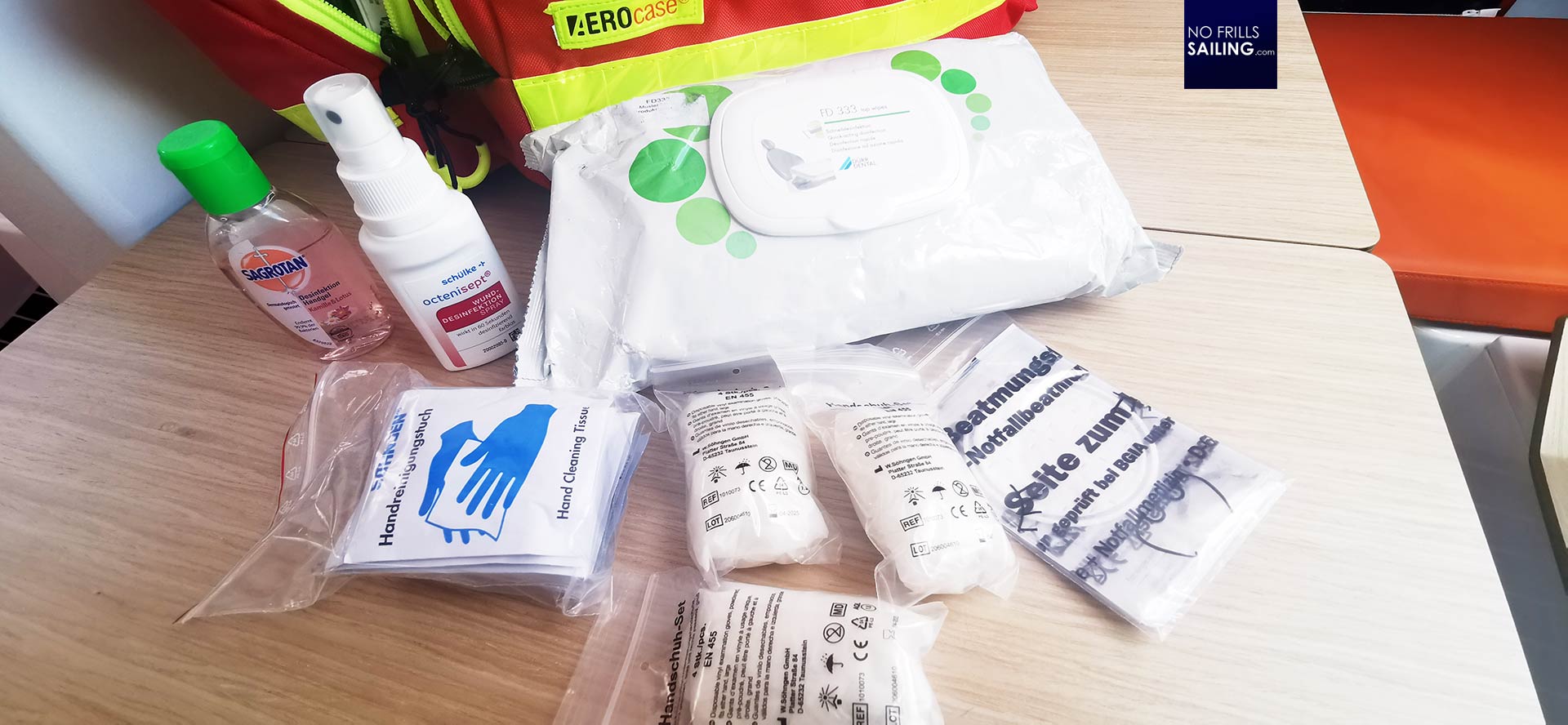
After the disinfection and cleansing category, I focused on medicine to treat most common symptoms: Ibuprofen for headaches and as a good pain killer. I know there is more, like ASS-based or Paracetamol tablets but I prefer Ibu/Nurofen. Also some nasal spray and a cough killer. For healing open wounds and bruises she gave me the hint to buy “Medigel” for faster and more effective healing. Waterproof band-aid is essential on a boat, as well as some burn ointment, charcoal tablets and caffeine tablets.
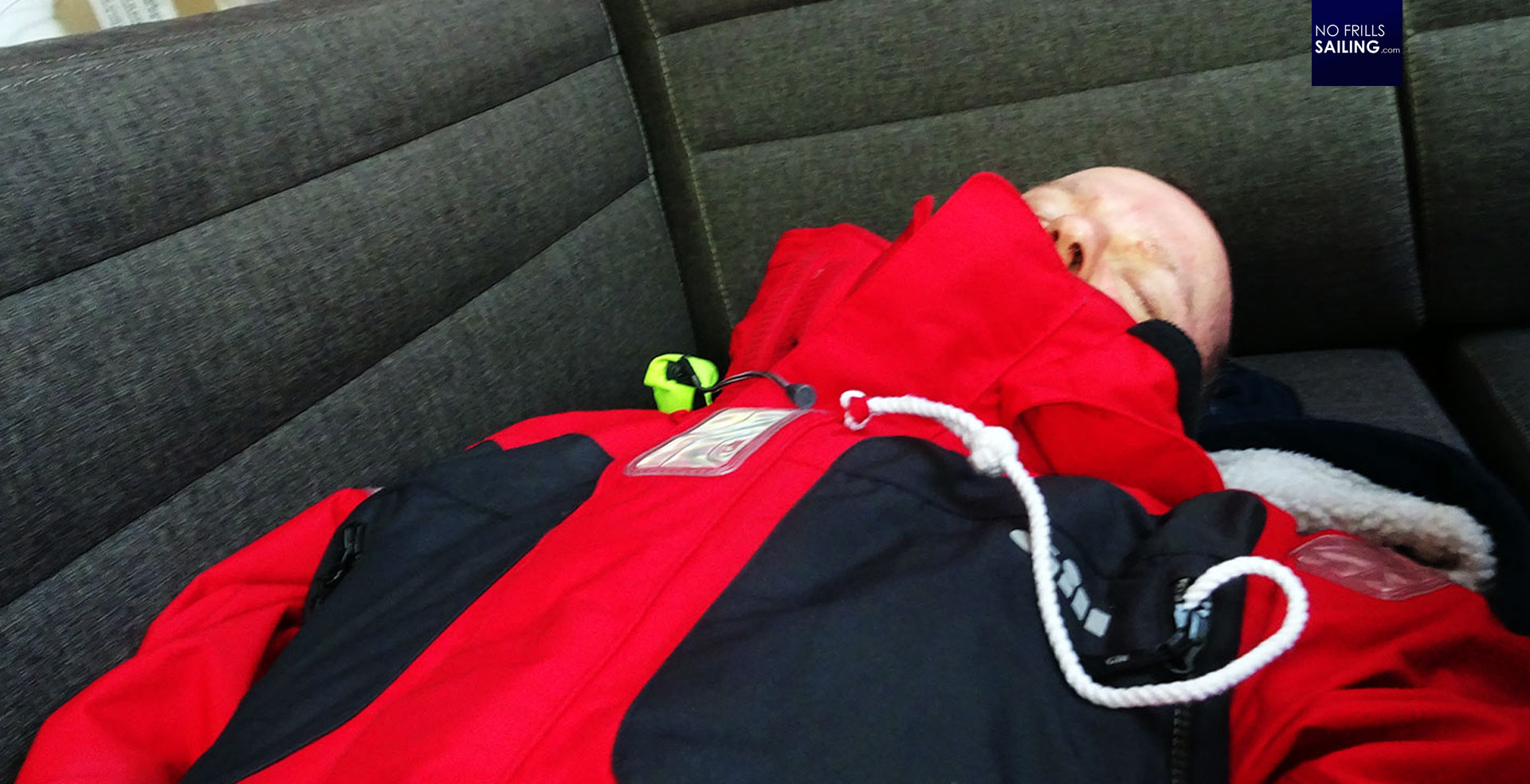
Latter would be a “last shot”. I know what sleep deprivation can do, especially during night shifts but I am certainly not a fan of drugging yourself to be awake. That mostly results in other, very unpleasant side-effect. Nevertheless, as a measure of last resort, caffeine in a high dose might be a good solution. I do not have any anti-seasickness pills with me as I personally do not suffer from it all too much and if my guests do so, I´d rather send them down to sleep than drugging them – nevertheless, I bought some Vomex as a light treatment.
Keeping your First Aid Kit updated
The current state of equipment in my First Aid bag is far from being “perfect” or complete, neither am I a specialist. There are numerous lists and blogs offering endless lists if what to have and what not. Of course, a kit for a blue water circumnavigation that is entering the farthest areas of the world will contain much, much more: In this, taking a Sea Doc-training course is also strongly recommended. For my purpose – coastal cruising with occasional offshore-parts – I think, my bag is filled appropriately to cope with the most probable injuries and sicknesses. But of course, I will grow with every trip I do and I sense that this bag might be filled slightly different in a one year´s time than it is now.
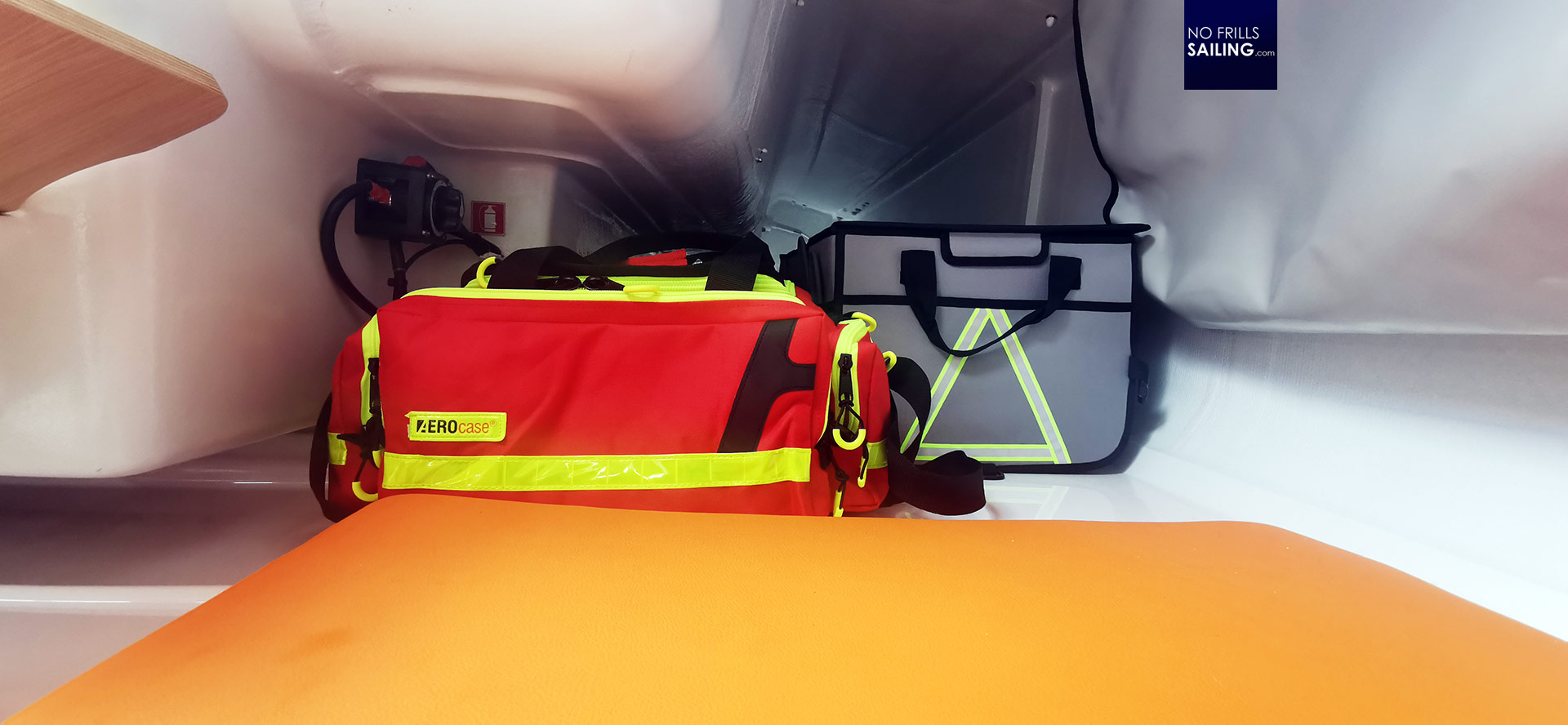
As my physicist friend told me, it might be a good idea to keep track of the “best before”-dates of all items in my bag. Especially medicine will loose its efficacy over time or – worse – contents might be converted into something harmful when getting old, so checking the dates and replacing expired contents of the equipment will not only keep the First Aid Kit as useful and effective as possible but also regularly reminds you, the skipper, to staying alert and being prepared to treat wounds, heal sicknesses and help yourself, your guests or other fellow sailors when your help is needed. I for my part feel a lot better now, knowing that I have a good stocked First Aid Kit in the back of my boat, ready at all times to quickly react.
You might also like to read:
Training the MOB code of practice
Seasickness and how to treat it
Real-life test of a survival suit
